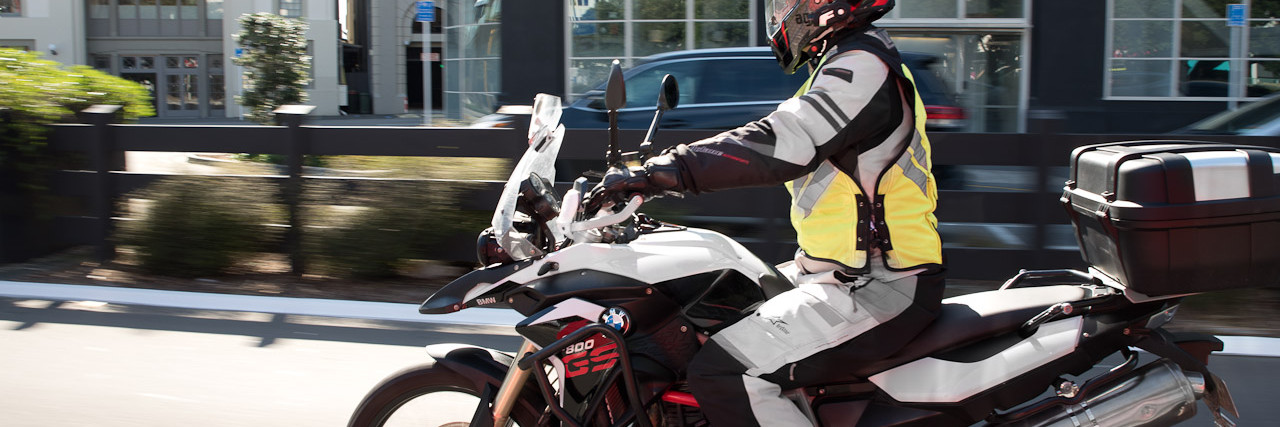Choosing pants or a one-piece
Information about choosing between a one-piece and a two-piece, and the different materials.
If you’re teaming up pants with an existing motorcycle jacket, getting them from the same manufacturer usually offers a good fit. But a mix-and-match approach can also work. Whether you go for a once-piece will boil down to the type of riding you do.
Choosing pants
You have three choices of material – Kevlar jeans, textiles or leather. Your choice might be influenced by your jacket, but the protection offered by a good pair of leather pants will beat textiles, which will usually beat Kevlar-reinforced denim. Textiles will be water-resistant, but you can opt for a waterproof oversuit on top of leather or Kevlar jeans.
A good start is to check the MotoCAP star ratings system. Again, CE standard labelling you see attached to pants will almost certainly be only for the knee and any hip armour.
You should be able to connect your pants to your jacket by way of a zip. Any zip is better than none, but a well-concealed zip fastening that goes all around your waist is by far the best. Another great way to ensure your pants stay in place in a crash is suspenders, if they’re securely attached or an integral part of the pants, and comfy too.
Always look for armour and internal or doubled-over stitching, and check MotoCAP for results.
Protecting you in a crash
Nothing will protect you better in a crash than leather gear with full armour. Make sure pants are a close fit to best keep the armour in place. Leather will stretch with use.
Two-piece suits
A textile two-piece is the meat-and-two-veg of motorcycle gear. A good set will:
- have CE armour in the shoulders, elbows, hips, knees and back
- be waterproof and breathable
- offer reasonable abrasion resistance
- join together or have suspenders.
With a removable warm liner, it will do duty in almost any type of riding. The exception is on track, where it’s not up to the potential abrasion of a high-speed spill. But you can get two-piece leather suits and, if they zip together securely all around the waist, they will be okay for track use.
The usual criteria apply in terms of concealed, doubled-over stitching on seams and a good, snug fit that keeps armour in place. Check if the gear you’re looking at has been covered by the MotoCAP star ratings system.
One-piece suits
There’s a reason why every motorcycle racer wears one-piece leathers. They offer the highest protection in a crash. With fewer seams and less chance of separation, a one-piece outperforms even a two-piece leather suit.
They have:
- armour in the shoulders, elbows, hips and knees, and usually knee sliders on top
- a separate vest-style back protector
- chest protection plate.
You’re pretty much as protected as you can get. An airbag-equipped suit is the ultimate, but some have the disadvantage of needing a gas recharge after one use. It’s not unknown for a rider to have more than one ‘off’ on race day!
If you do a lot of track days, or you race, then a one-piece is a must. The disadvantages are mostly off-bike comfort, the lack of versatility to cope with varying temperatures and weather, and the unmistakable appearance.
Any once-piece suit from a reputable manufacturer will feature approved armour, proper stitching and tough, secure closures. Just beware of knock-offs and no-name versions that may not perform as they should.




